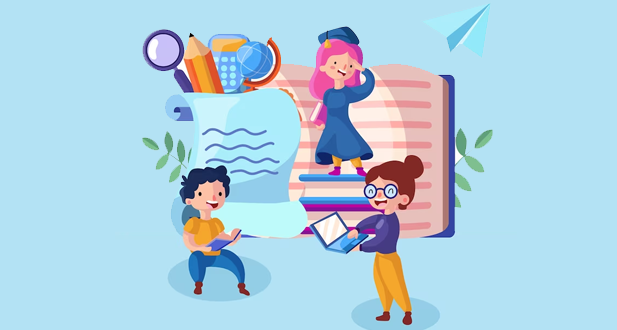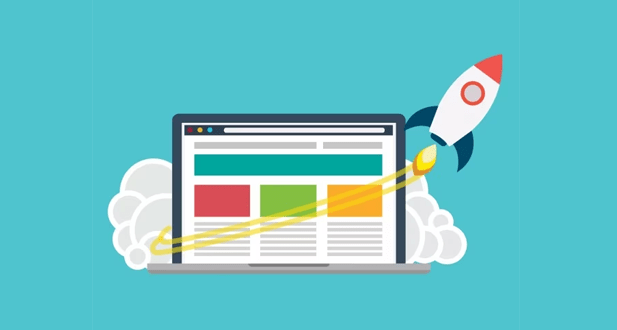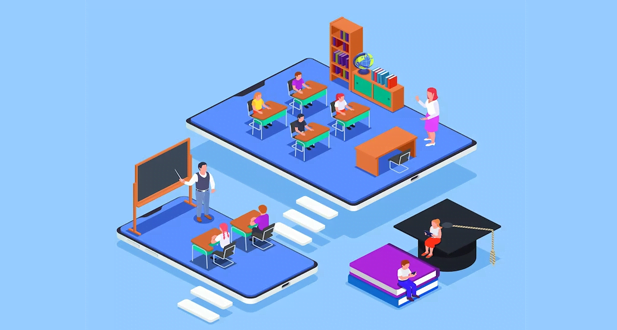The concept of education has evolved significantly over the years, moving away from a one-size-fits-all approach towards a more personalized and individualized model. One prominent manifestation of this shift is the creation and implementation of Individualized Education Plans (IEPs) within the educational system. An IEP is a customized document developed for students with disabilities to ensure they receive a tailored education that addresses their specific needs and supports their learning journey. By maximizing the potential of IEPs, educators can pave the way for enhanced learning outcomes, improved student engagement, and greater inclusivity in the classroom.
About Individualized Education Plans
An Individualized Education Plan (IEP) is a personalized educational roadmap designed to meet the unique learning needs of students with disabilities. Developed collaboratively by educators, parents, and specialists, an IEP outlines specific goals, accommodations, and support services necessary to provide these students with a meaningful and effective education. The IEP process is guided by the Individuals with Disabilities Education Act (IDEA), a federal law in the United States that ensures students with disabilities receive appropriate educational services.
An IEP is a comprehensive document that serves as a roadmap for a student’s educational journey. It begins with a thorough assessment of the student’s current academic and developmental abilities, as well as any challenges they may face due to their disability. This assessment informs the creation of individualized goals that are specific, measurable, achievable, relevant, and time-bound (SMART goals). These goals are the foundation of the IEP, driving the educational strategies and interventions that will be implemented.
Once the goals are established, the IEP team, which includes teachers, special education professionals, parents, and sometimes the student, gathers to discuss and determine the appropriate accommodations and support services. Accommodations can include adjustments to classroom materials, testing procedures, and the learning environment, ensuring that students can access the curriculum on an equal footing with their peers. Support services might involve specialized instruction, speech therapy, occupational therapy, or counseling, depending on the individual needs of the student.
Regular progress monitoring is a crucial aspect of the IEP process. Educators continuously assess the student’s performance and compare it to the established goals. If the student is not making satisfactory progress, the IEP team reconvenes to discuss potential modifications or enhancements to the plan. This iterative process ensures that the student’s needs are always being addressed and that the IEP remains a dynamic and responsive tool.
A key principle of IEPs is the principle of the Least Restrictive Environment (LRE). This concept emphasizes that students with disabilities should be educated in environments that resemble typical educational settings as closely as possible, while still providing the necessary support. Inclusion in regular classrooms fosters social interaction, promotes positive peer relationships, and helps students with disabilities develop important life skills.
Family involvement is integral to the IEP process. Parents and guardians play an active role in developing the IEP, contributing valuable insights about their child’s strengths, challenges, and preferences. They also have the right to participate in IEP meetings, review and provide input on the plan, and request changes if they believe their child’s needs are not being adequately met. Collaborative communication between educators and families ensures that the student receives consistent support both at school and at home.
- Understanding Individualized Education Plans (IEPs)
An IEP is a comprehensive and legally binding document developed for students with disabilities under the framework of the Individuals with Disabilities Education Act (IDEA) in the United States. The primary goal of an IEP is to provide a roadmap for educational services and accommodations that meet the unique needs of each student. These needs could encompass a wide range of factors, including academic, behavioral, social, and emotional aspects. The IEP process typically involves collaboration among educators, parents or guardians, and other relevant specialists, such as speech therapists, occupational therapists, and psychologists.
- Personalization and Tailoring Instruction
Maximizing the potential of IEPs hinges on the commitment to personalization and the understanding that each student is distinct. One of the cornerstones of effective IEPs is the customization of instruction to match a student’s learning style, strengths, and challenges. This approach involves moving beyond a standardized curriculum and instead crafting lessons that cater to the student’s abilities and preferences. For instance, if a student learns best through visual aids, incorporating diagrams, videos, and infographics into lessons can significantly enhance their comprehension and retention of information.
Moreover, the IEP should identify specific academic goals that are realistic yet ambitious for the student. These goals serve as milestones to gauge progress and provide a clear direction for educators to follow. Regular assessments and data collection are essential components of this process, enabling educators to measure progress accurately and make necessary adjustments to the instructional approach.
- Holistic Support Systems
IEPs are not limited to academic aspects alone; they also address social and emotional dimensions of a student’s education. By incorporating strategies that promote emotional well-being and social interaction, educators can create a conducive environment for learning. For example, if a student faces challenges in social interactions, the IEP might include provisions for structured social skill development sessions or opportunities for one-on-one peer interactions.
Furthermore, IEPs should take into account any behavioral challenges a student might face. Implementing positive behavior intervention strategies can transform the learning experience by focusing on prevention and redirection rather than punitive measures. By fostering a supportive and understanding environment, educators can help students with behavioral difficulties thrive academically and socially.
- Collaboration and Communication
The success of an Individualized Education Plan (IEP) hinges significantly on collaboration and effective communication among all stakeholders involved in a student’s education journey. These stakeholders typically include educators, parents or guardians, specialists (such as therapists or counselors), and importantly, the students themselves. Active participation from each group ensures that the IEP is tailored to meet the unique needs of the student and remains responsive to their evolving requirements over time.
Educators play a central role in IEP development and implementation, as they are responsible for delivering instruction and assessing progress towards educational goals. Their insights into a student’s academic performance, learning style, and areas needing support are vital in crafting meaningful objectives within the IEP.
Parents or guardians bring valuable perspectives on their child’s development outside of school, providing crucial context and observations that inform goal-setting and support strategies. Their involvement also ensures continuity between home and school environments, reinforcing consistent approaches to fostering the student’s growth.
Specialists, such as occupational therapists, speech-language pathologists, or behavior specialists, contribute specialized expertise to address specific needs identified in the IEP. Their assessments, recommendations, and interventions complement classroom instruction, offering targeted support that enhances the overall effectiveness of the plan.
Equally important is the involvement of the students themselves, especially as they mature and gain understanding of their learning styles and needs. Inclusion in the IEP process empowers students to take ownership of their educational journey, fostering independence, self-advocacy, and motivation to achieve their goals.
Regular meetings among stakeholders are essential to review progress, discuss challenges, and make necessary adjustments to the IEP. These collaborative sessions facilitate ongoing communication, ensuring that everyone remains informed and aligned with the student’s evolving needs and aspirations. Feedback gathered during these meetings informs decisions on instructional strategies, support services, and accommodations, fostering a dynamic and responsive educational environment.
In conclusion, effective collaboration and communication among educators, parents or guardians, specialists, and students themselves are fundamental to the success of an IEP. By working together, sharing insights, and maintaining open dialogue, stakeholders can create and sustain a supportive framework that maximizes educational opportunities and empowers students to reach their full potential. This collaborative approach not only enhances the relevance and effectiveness of the IEP but also promotes a culture of inclusivity, engagement, and shared responsibility in supporting student success.
- Inclusivity and the Role of Technology
Technology has revolutionized the landscape of education, particularly in the realm of Individualized Education Plans (IEPs), by offering powerful tools to maximize student potential and promote inclusivity. These technological innovations provide adaptive solutions that cater to diverse learning challenges, making education more accessible and engaging for all students, including those with disabilities.
Assistive technologies play a crucial role in enhancing the educational experience for students with disabilities. Tools such as text-to-speech software enable students who struggle with reading to access written content by converting text into spoken language. Similarly, speech recognition software allows students with writing difficulties to dictate their ideas, thereby overcoming barriers to expressing their thoughts effectively.
Interactive learning platforms and educational apps offer personalized learning experiences tailored to individual learning styles and abilities. These platforms can adapt content and learning activities based on real-time assessments of student progress, ensuring that instructional materials are appropriately challenging yet accessible.
Furthermore, digital tools facilitate collaboration and communication among stakeholders involved in the IEP process. Online platforms enable educators, parents, specialists, and students to share information, track progress, and collaborate on goal-setting and support strategies. This seamless integration of technology streamlines administrative tasks and enhances coordination, ensuring that everyone remains informed and aligned with the student’s educational goals.
Moreover, virtual reality (VR) and augmented reality (AR) technologies present immersive learning experiences that bring abstract concepts to life and engage students in interactive simulations. These technologies not only enhance understanding and retention of complex concepts but also provide opportunities for experiential learning that may otherwise be inaccessible due to physical or logistical constraints.
By leveraging technology, educators can create a more inclusive learning environment where every student, regardless of their learning challenges, can participate actively and succeed academically. The integration of assistive technologies, interactive platforms, and collaborative tools empowers students to overcome barriers, promotes independence and self-confidence, and fosters a positive learning experience that celebrates diversity.
In conclusion, technology has emerged as a transformative force in maximizing the potential of IEPs, offering innovative solutions that cater to diverse learning needs and promote educational equity. By embracing these technological advancements, educators can create inclusive classrooms where all students have the opportunity to thrive, learn, and achieve their full potential in a supportive and engaging environment.
- Challenges and Future Directions
While the concept of IEPs holds great promise, its implementation is not without challenges. Limited resources, lack of specialized training for educators, and bureaucratic hurdles can hinder the effective development and execution of IEPs. To address these challenges, investments in teacher training and professional development are essential. Educators need the skills and knowledge to identify and address diverse learning needs adequately.
Looking ahead, the future of IEPs lies in harnessing advancements in educational research and technology. Evidence-based practices and data-driven insights can guide the development of more effective IEPs. Additionally, the integration of artificial intelligence and machine learning can provide personalized recommendations for instructional strategies, thereby further individualizing the education experience.
Conclusion
Maximizing Individualized Education Plans (IEPs) represents a pivotal shift towards a student-centric approach in education, emphasizing the unique needs and strengths of each learner. This personalized framework not only acknowledges but celebrates the diversity among students, aiming to foster inclusive and effective learning environments.
At its core, effective utilization of IEPs involves tailoring instruction to accommodate diverse learning styles, abilities, and interests. This customization ensures that educational goals are meaningful and achievable for every student, promoting engagement and motivation in their learning journey.
Holistic support systems are integral to the success of IEPs, encompassing not just academic goals but also social, emotional, and behavioral development. Collaborative efforts involving educators, parents, and specialized professionals facilitate comprehensive strategies that address all facets of a student’s growth.
Furthermore, leveraging technology enhances the implementation of IEPs by providing innovative tools for instruction, communication, and data management. Digital platforms can streamline progress tracking, facilitate real-time feedback, and offer adaptive learning resources tailored to individual needs.
As education continues to evolve, the refinement of IEPs remains crucial in adapting to emerging challenges and opportunities. By continually assessing and adjusting these plans based on student progress and evolving educational practices, educators can ensure that all students receive the support and resources necessary to thrive academically and personally.
In conclusion, maximizing the potential of IEPs requires a commitment to student-centered practices, collaborative partnerships, and the integration of technological advancements. By prioritizing individualized instruction, holistic support, collaboration, and technological innovation, educators empower students to achieve their full potential in inclusive and supportive learning environments. As we navigate the future of education, the ongoing refinement and implementation of IEPs will continue to play a vital role in promoting equity, engagement, and success for all learners.




